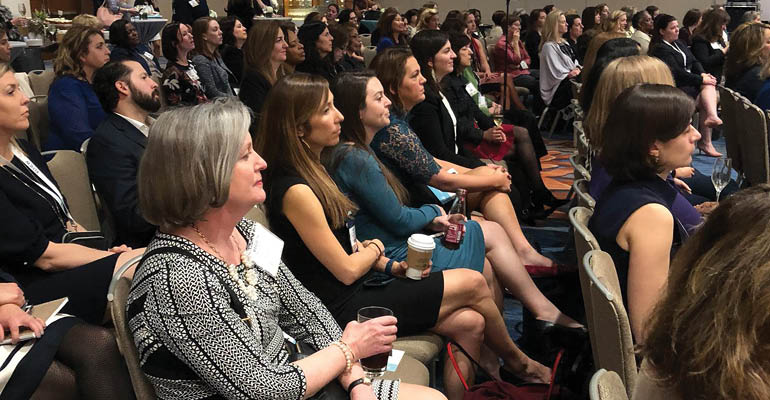During Tuesday’s panels at the MBA’s annual CREF/Multifamily Convention and Expo taking place in San Diego, participants discussed the increasingly crowded bridge lending space, the conditions necessary for the continued flow of capital and possible disruptions to the mortgage banking industry. Here are the takeaways from day two of the show:
- In order for foreign capital to continue to flow freely into U.S. commercial real estate, the market needs interest rate divergence, strong property fundamentals and a “somewhat stabilized political system,” according to Jeff Friedman, co-founder and principal of Mesa West Capital. At the moment, those three conditions exist in the U.S. commercial real estate market, he noted. As a result, “the flow of [foreign] money into the debt space is enormous,” said Mark Williams, managing director with Eastdil Secured LLC. “Debt is viewed as a very safe investment for foreign entities.”
- In fact, the debt market has gotten increasingly crowded, especially in the bridge lending space. “There’s been a blurring of the space between bank lenders, and even occasionally life company lenders, and alternative lenders,” said Charles Rose, senior director of structured investments with Invesco Real Estate. “We’ve been a little surprised in a couple of cases by banks stretching a little on the proceeds and being real competition.” Similarly, Rob Brown, managing director with JCR Capital, noted that today, there is often at least one outlier bid on bridge loan deals and that bid tends to come from a bank.
- The traditional players in the bridge lending space hope that the competition will eventually subside once the yields become less attractive to the newer entrants. Jim Flynn, president of Hunt Mortgage Group, compared it to the time a few years ago when there were 40 conduit shops in the market, a number that has eventually shrunk down. “Some people might step back as the market shifts because it’s not a core strategy for them,” he noted.
- In the meantime, borrowers have plenty of choice, and are at times willing to take on deals that seem rather risky. “We’ve seen a lot more people come in looking for a second bridge loan,” Flynn said. “There’s got to be a really good story behind it.”
- For his part, Rose mentioned that Invesco is starting to see an increase in value-add multifamily deals “with what we would call very late cycle underwriting” come across its desk. “We are taking a more conservative view,” Rose noted.
- Rose is also taking a skeptical approach on deals involving retail assets and suburban office properties, unless they are part of the mixed-use, transportation-oriented “exurb” trend. “I’d be surprised if we did a single suburban office deal this year,” he said. “We haven’t done a single retail deal in the last year.”
- While the commercial real estate industry has been somewhat of a latecomer in adapting new technologies, some panelists believe that a major shift is coming to how mortgage bankers do business. “There’s not one industry that has survived the technological disruption with so many intermediaries” as commercial real estate lending has, according to Shekar Narasimhan, managing partner with Beekman Advisors Inc. The industry is still a long time away from the point at which some professions will become obsolete, but when that moment comes, the most vulnerable people will be appraisers and commissioned loan officers, Narasimhan predicts.
- With the emergence of the various technology platforms in the commercial real estate lending space and the impact of new technologies on everyday interactions in general, the industry will also become far less reliant on existing relationships than it has been so far, noted William M. Walker, chairman and CEO of Walker & Dunlop LLC. “This used to be a very clubby industry, and that’s how you got introduced and that’s how you got the account,” he said. That is bound to change in his view.MBA CREF Multifamily Convention and Expo

0 comments
Hide comments
